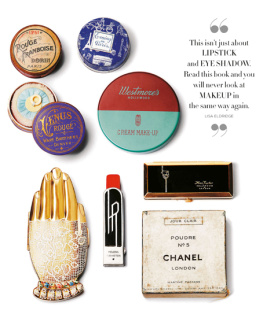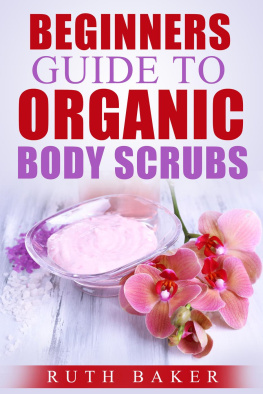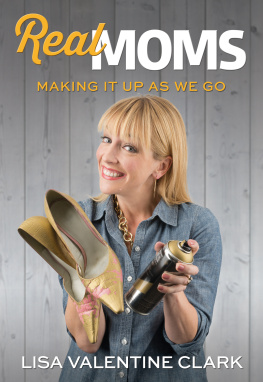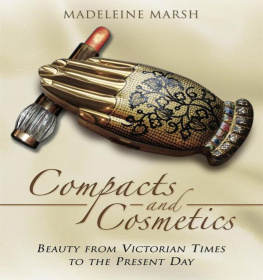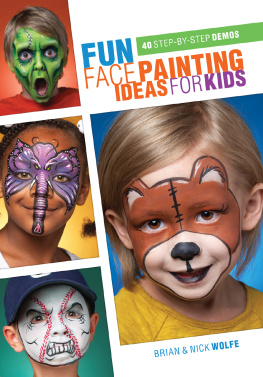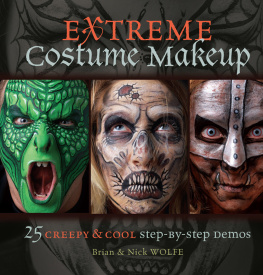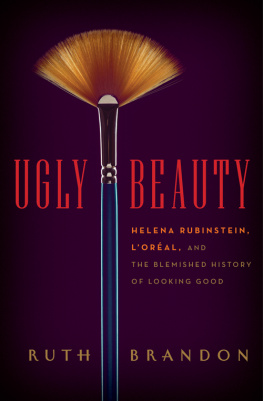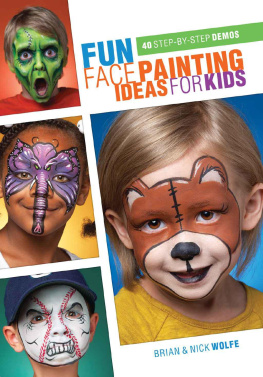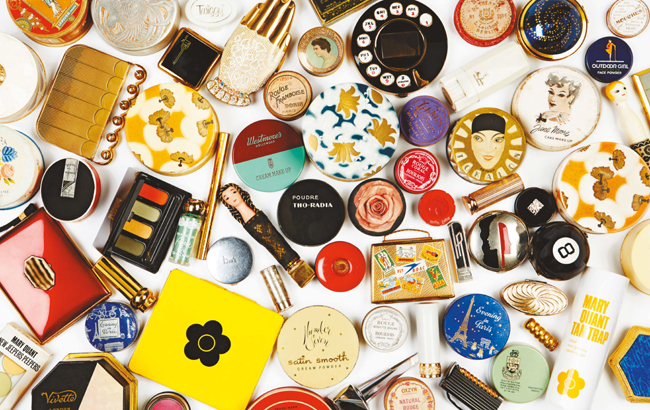


Editor: David Cashion
Designers: Robin Derrick with Danielle Young
Production Manager: True Sims
Library of Congress Control Number: 2014959338
ISBN: 978-1-4197-1796-3
Text copyright 2015 Lisa Eldridge
See for photo credits.
Published in 2015 by Abrams Image, an imprint of ABRAMS.
All rights reserved. No portion of this book may be reproduced, stored in a retrieval system, or transmitted in any form or by any means, mechanical, electronic, photocopying, recording, or otherwise, without written permission from the publisher.
Abrams Image books are available at special discounts when purchased in quantity for premiums and promotions as well as fundraising or educational use. Special editions can also be created to specification. For details, contact specialsales@abramsbooks.com or the address below.

115 West 18th Street
New York, NY 10011
www.abramsbooks.com
To my mother,
whose makeup got me into all of this in the first place
Contents
Section One
The Ancient Palette
Section Two
The Business of Beauty


Weve been altering our skin with paints and oils and dabbling in artistry since the Ice Age.
A
Introduction
Although we have been painting ourselves in a variety of ways for thousands of years, the reasons whyand howwe wear makeup in the twenty-first century have changed dramatically. Now when we put on our makeup, we have literally hundreds of trends and styles to choose from. Theres a full spectrum of color and a multitude of affordable (and not so affordable) products at our fingertipswith the freedom to use these products as we want, without censuresomething that was not the case until fairly recent times. But to really understand how painting our face has evolved into a fine art, we need to look back and track our ever-evolving relationship with makeup, tracing the journey that has led to beauty becoming the multibillion-dollar industry it is today.
I have been fascinated by makeup since I was a childinitially captivated more by the colors, smells, sense of history, and objects themselves, than the desire to apply it. But when I was thirteen, I decided I wanted to be a makeup artist after a family friend gave me a book about theatrical makeup for my birthday, and ever since then, face paint from the past, present, and future has been my life. I started collecting vintage items like powder boxes and antique pots of blush in the early 1990s and Ill never forget the rush of excitement discovering my first vintage makeup finds at a stall in the Portobello Road Market in London.
Makeup was ablaze with color.
I still get a thrill when Im able to add new rarities to my collection. For the past twenty years, Ive been painting the faces of models and celebrities for glossy magazines, advertising campaigns, and runway shows all over the world; in addition to making TV shows and videos demonstrating to regular women how they can translate the professional techniques and trends Ive mastered to their own faces. I have also worked for many years as the creative director for some of the worlds biggest cosmetic brands: including Shiseido, Boots No7, and, most recently, Lancme. Through working with these international brands Ive been able to learn how makeup is made, marketed, and sold, and understand fully the ways in which perceptions of beauty differ throughout the world. The production of makeup is something that has captivated me in a way that I never believed it would (I wasnt exactly the best chemistry student at school). I have embraced the science and technology involved in the future of makeup with as much vigor as my fascination with its history. What started with a love of the colors and objects themselves, and progressed with an education into how its made, has now come full circle with this book.
The most difficult thing about researching and writing this book has been deciding what to leave out. There were enough intriguing stories, quirky anecdotes, and riveting research to fill a volume ten times this size, but, in the end, I had to choose the elements that I thought were the most interesting; I hope you agree. In terms of the structure, Ive chosen to organize it thematically rather than chronologically; partly because I found it more interesting that way, but also because, like so often in history, things overlap, repeat, and develop in an organic, not-always-linear way. Ive also had to be disciplined in sticking to the subject at hand. The history of makeup is intrinsically linked with the development of perfume, skincare, and hair care but these subjects are so huge in their own right that I only could touch upon them when absolutely necessary. Ive dotted my personal Makeup Muses throughout the book. These women not only changed ideas of what a woman could be, but redefined how a woman could look. Trailblazing, rule-breakers, all; these women have inspired many of the looks we wear today.
This is a passion project and a story that I believe deserves to be told. My ultimate dream is that anyone who reads this book will never look at their makeup bag in the same way again and might even look at the history of women from a new perspective.

The natural world provided everything needed for the ancient makeup bag.

Painting our faces is as much a part of human nature as the need to eat and sleep. Photograph by Irving Penn, Cond Nast. Vogue, November 1994.
A
PROLOGUE
The Painted Face
Going by this definition, weve been altering our skin with paints and oils and dabbling in artistry and artifice since the Ice Age. But what drives our desire to paint ourselves?
Anthropologists believe that the very first instances of face and body painting would have been a form of protection from the elements or used as camouflage or as part of a ritual. Large quantities of red ochre (a pigment that takes its reddish color from the mineral hematite) discovered in excavations of South African caves are estimated to date back 100 to 125,000 years ago. The fact that there are no cave paintings or decorated artifacts at these sites has led archaeologists to believe that the ochre was used to paint the face and bodyprehistoric cosmetics, as Steven Mithen, professor of archaeology and anthropology at Reading University, describes them. We know that paint was also used to instill tribal allegiance and to scare the opposition (a good example of this is the ancient Britons, who painted their faces blue with dye produced from the leaves of the woad plant before going into battle). Over time, decorative face painting became associated with beautification, social status, and preserving youthfulness, and from the eighteenth century onward, more closely linked to fashion.
Next page
